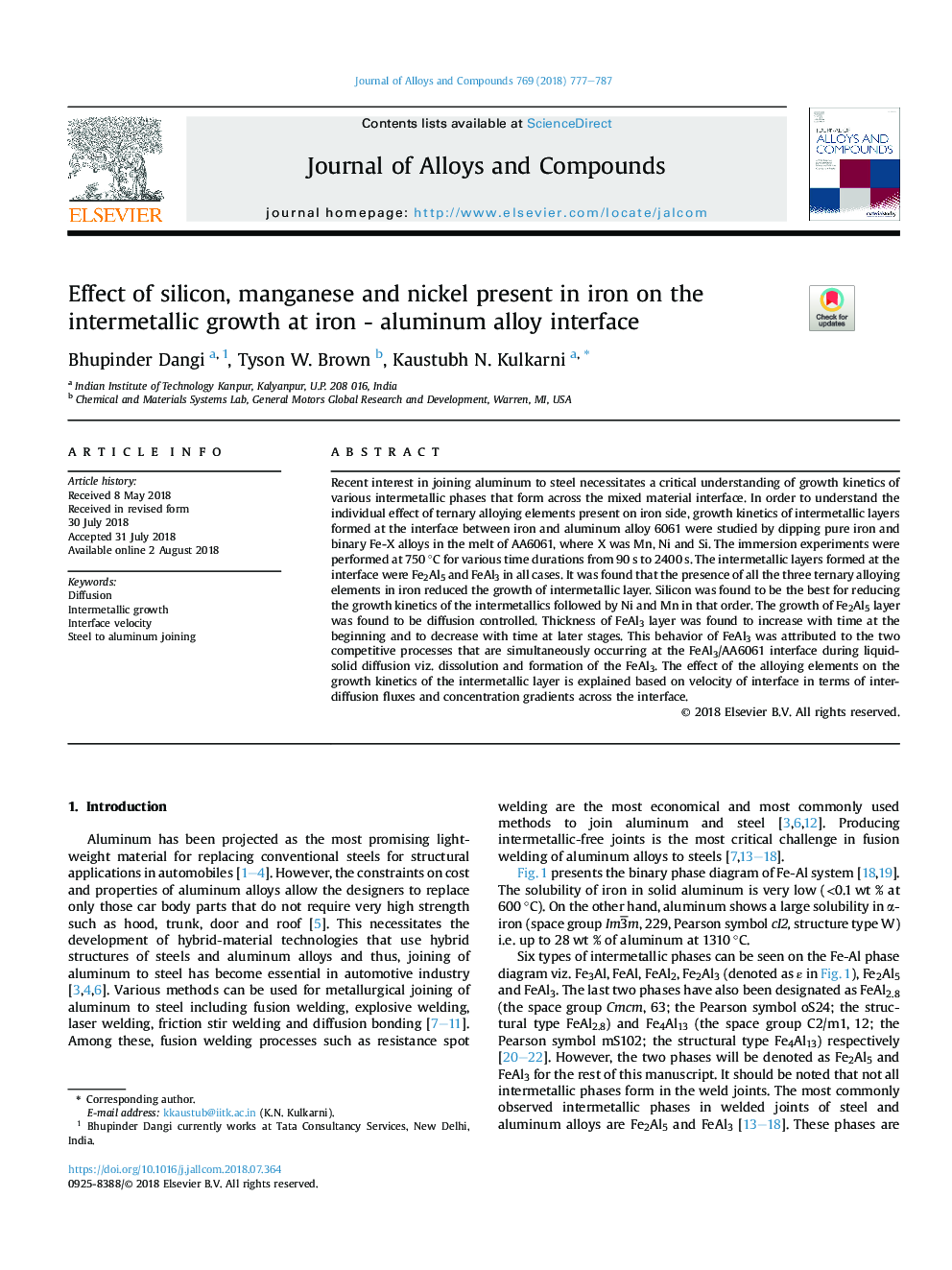| Article ID | Journal | Published Year | Pages | File Type |
|---|---|---|---|---|
| 7990071 | Journal of Alloys and Compounds | 2018 | 11 Pages |
Abstract
Recent interest in joining aluminum to steel necessitates a critical understanding of growth kinetics of various intermetallic phases that form across the mixed material interface. In order to understand the individual effect of ternary alloying elements present on iron side, growth kinetics of intermetallic layers formed at the interface between iron and aluminum alloy 6061 were studied by dipping pure iron and binary Fe-X alloys in the melt of AA6061, where X was Mn, Ni and Si. The immersion experiments were performed at 750â¯Â°C for various time durations from 90â¯s to 2400â¯s. The intermetallic layers formed at the interface were Fe2Al5 and FeAl3 in all cases. It was found that the presence of all the three ternary alloying elements in iron reduced the growth of intermetallic layer. Silicon was found to be the best for reducing the growth kinetics of the intermetallics followed by Ni and Mn in that order. The growth of Fe2Al5 layer was found to be diffusion controlled. Thickness of FeAl3 layer was found to increase with time at the beginning and to decrease with time at later stages. This behavior of FeAl3 was attributed to the two competitive processes that are simultaneously occurring at the FeAl3/AA6061 interface during liquid-solid diffusion viz. dissolution and formation of the FeAl3. The effect of the alloying elements on the growth kinetics of the intermetallic layer is explained based on velocity of interface in terms of interdiffusion fluxes and concentration gradients across the interface.
Related Topics
Physical Sciences and Engineering
Materials Science
Metals and Alloys
Authors
Bhupinder Dangi, Tyson W. Brown, Kaustubh N. Kulkarni,
